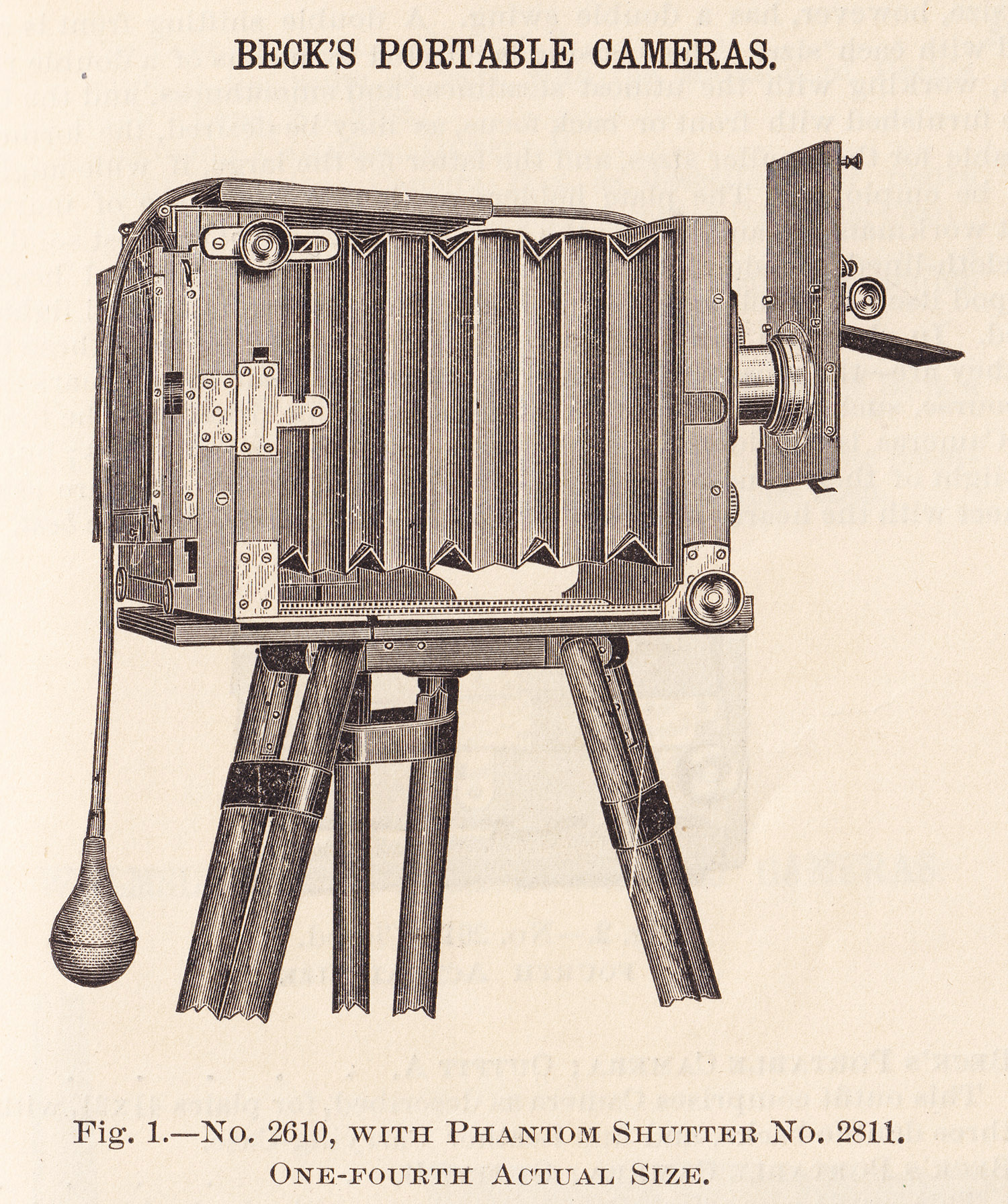R. & J. Beck
68 Cornhill (>1880), London
Dickenson St., Kentish Town, England (Lister Works)
1016 Chestnut St., Philadelphia, PA (W.H. Walmsley, Manager)
R. & J. Beck, Richard and Joseph Beck, proprietors, sold optical lenses, including camera and miscropical lenses, cameras, and other optical goods from c.1865 - c.1895. They were the successors of a number of optical companies going back to 1847. R. & J. Beck Ltd was established c.1895 and continued as a large supplier of optics and microscopes through c.1920, then, as a smaller supplier apparently until the present, under different names. They operated a factory in either Kentish Town, London or Holloway, London (only several miles away), named the Lister Works (after the famous microscopist Joseph J. Lister, who helped to establish the buisiness).
William H. Walmsley (1930-1905) started his career in optics in about 1865 by preparing microscope slides for the increasingly popular pastime of microscope viewing. He joined the Academy of Natural Sciences of Philadelphia, on May 26, 1868. His expertise led to his partnership in the Philadelphia optics and microscope manufacturer James W. Queen & Co. when James Queen retired in 1870. That same year, he won a microscope slide prize in September, 1870 at the Exhibition of the American Institute, New York. In 1877, he was hired by the English optics and microscope manufacturer to manage their new Philadelphia outlet. In 1884, Beck and Walmsley agreed that Walmsley would operate his own company, W.H. Walmsley & Co. at the same address, 1016 Chestnut St., Philadelphia, while being the sole American agent for the products of R. & J. Beck. In his catalog, starting in 1884, Walmsley sold s number of view cameras from a variety of manufacturers: Scovill Mfg. Co., Rochester Optical Co. (including both the American Challenge Swivel Bed View and the American Challenge View Camera Wooden Bed cameras, E. & H.T. Anthony & Co., American Optical Co., the Blair Camera Co., and the W.H. Walmsey &Co. By 1886, added to the catalog were the manufacturers: J. Lancaster & Son (Instantograph), and R.J. Beck (Beck's Portable Camera), Walmsley added The Eastman Co. in the 1888 catalog.
In April 1889, W.H. Walmsley & Co. was dissolved and its premises (1016 Chestnut St.) and stock was taken over by Morris Earle, a former partner and continued operating as Morris Earle & Co. Earle continued as American agent for R. & J. Beck at least until c.1908. The catalog: Photographic Cameras, Supplies and Lenses, Williams, Brown & Earle, Inc. (Philadelphia, PA), undated c. 1908, ~6"x9", 144pp mentions R. & J. Beck's Isostigmar Lenses.
Anthony's Bulletin reported "“The firm of W.H. Walmsley & Co. having been dissolved by mutual agreement, Mr. W.H. Walmsley, the founder and senior member thereof, has, in conjunction with others, formed a limited corporation, under the title of W.H. Walmsley, Limited. The photographic department will be under the management of Mr. J. Milnor Walmsley, who for the past five years has been at the head of that branch in the house of W.H. Walmsley & Co. The new corporation have secured commodious quarters at 1022 Walnut Street, Philadelphia, where they hope to see all old and many new friends.” This location is only two blocks from the old location on Chestnut. W.H. Walmsley Ltd. issued 1890 and 1891 catalogs, but the business faltered and ended about 1894. W.H. Walmsley, having seen the handwriting on the wall, left his nephew in Philadelphia, and relocated to Chicago. He was apparently working at the Geneva Optical Co. in 1893, when their catalog featured Walmsley's photomicrographic cameras. Another Chicago company: Walmsley, Fuller & Co. (c.1894), dealing in microscopical goods, only lasted a couple of years. He returned to Philadelphia in 1899, but, believe it or not, did not start another company.
Trade Card, c.1890 for J. & J. Beck at 1016
Chestnut St., Philadelphia, the same address as W. H. Walmsley & Co.
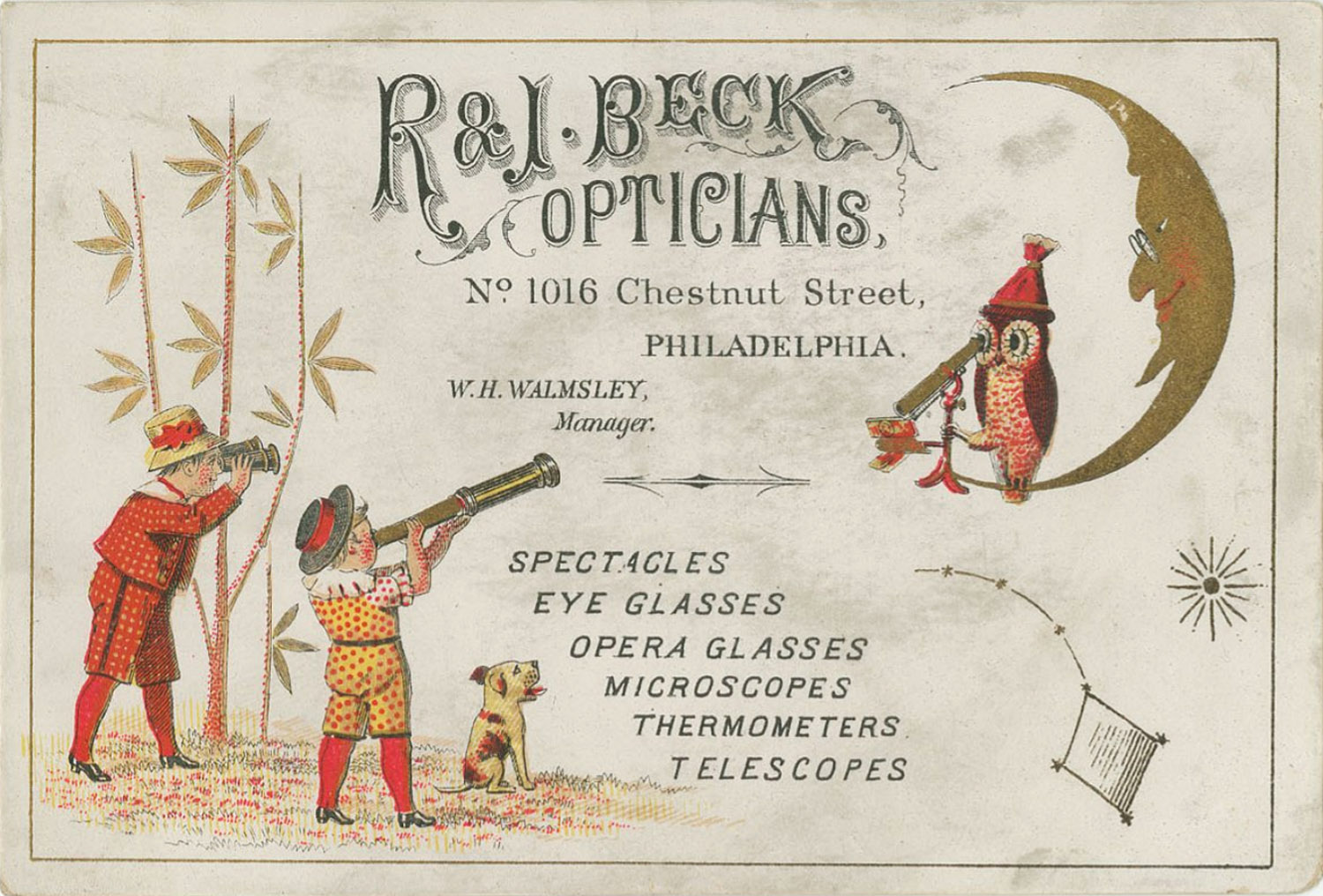
Beck's Portable Camera
5 x 7"

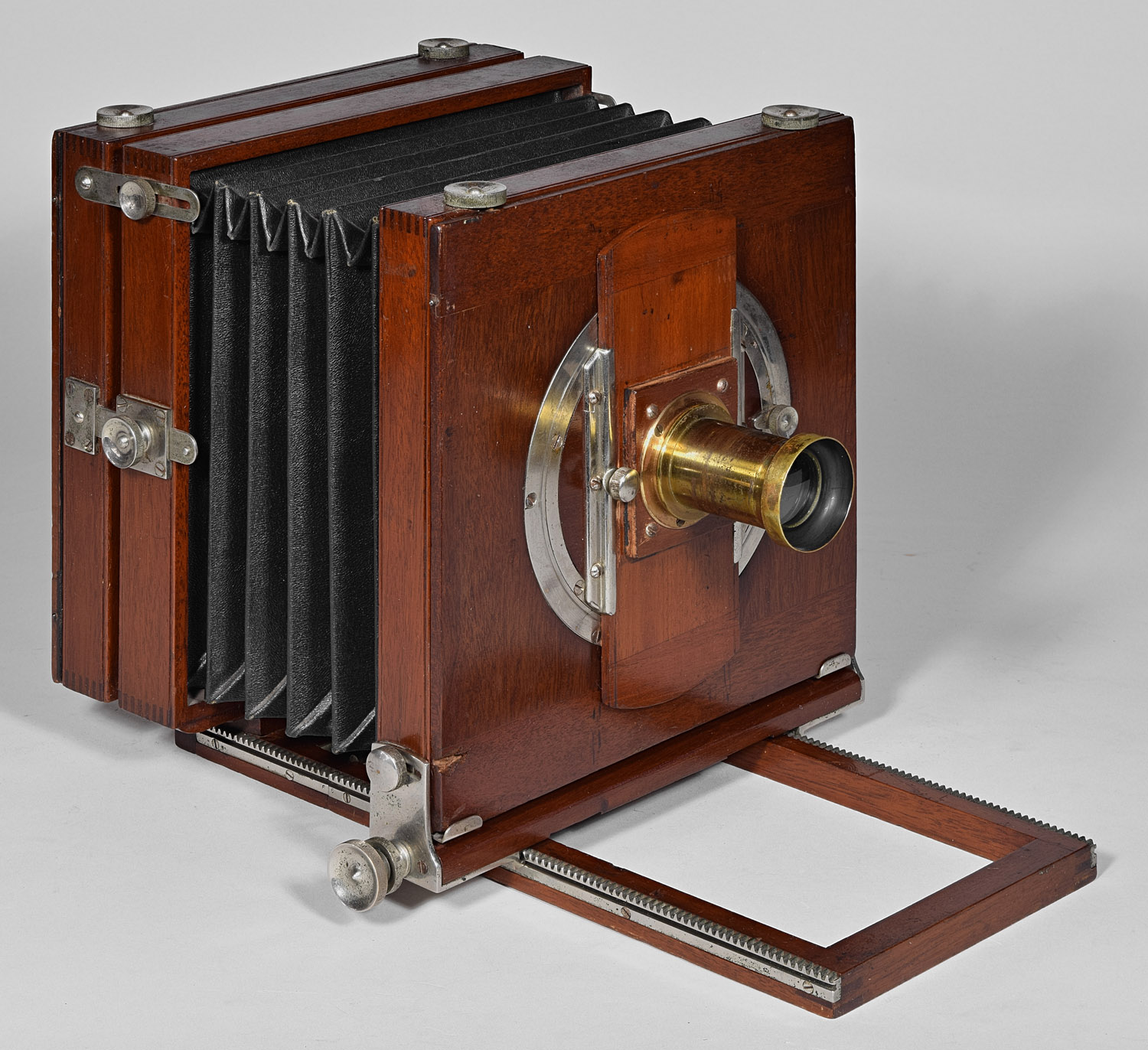
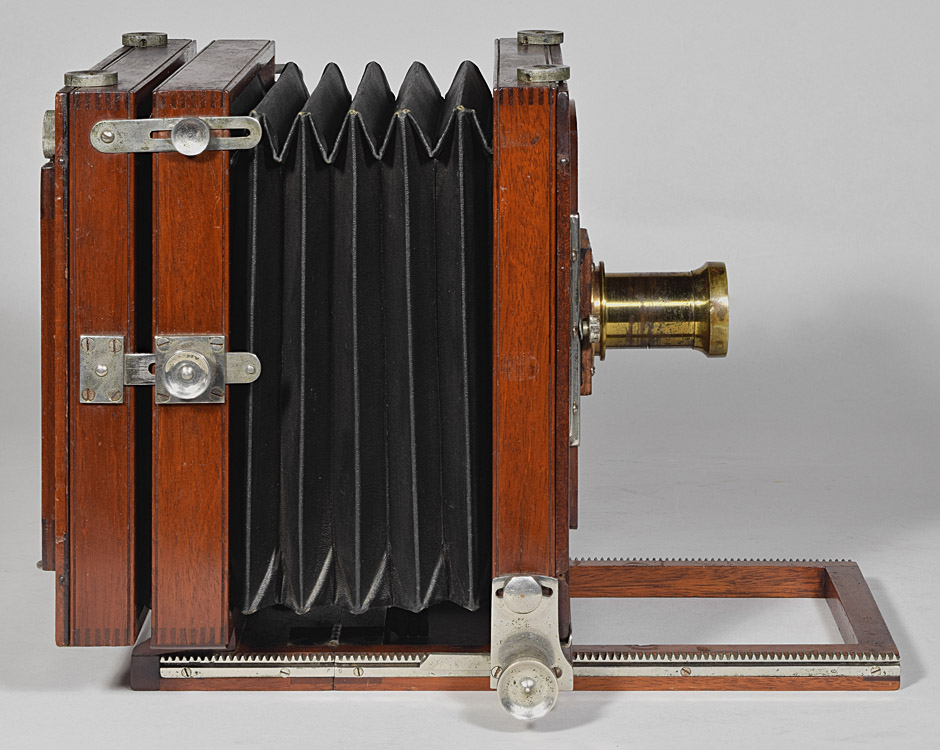
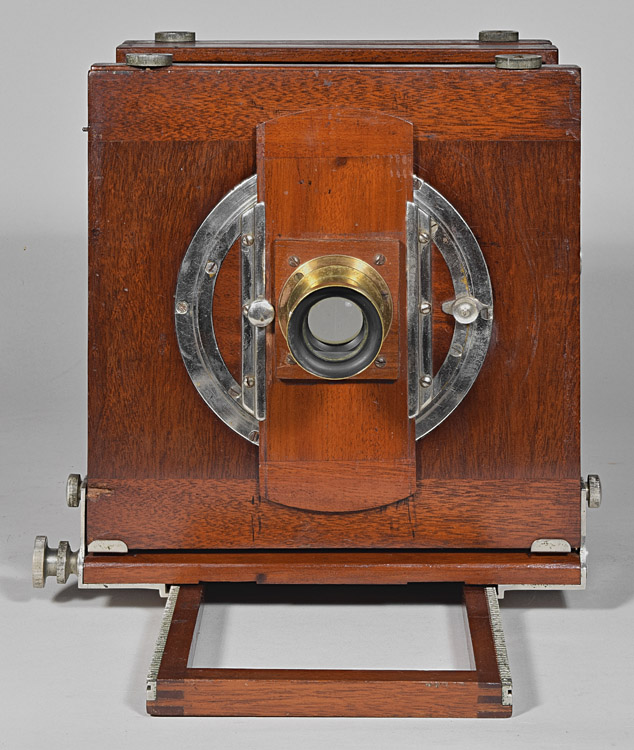
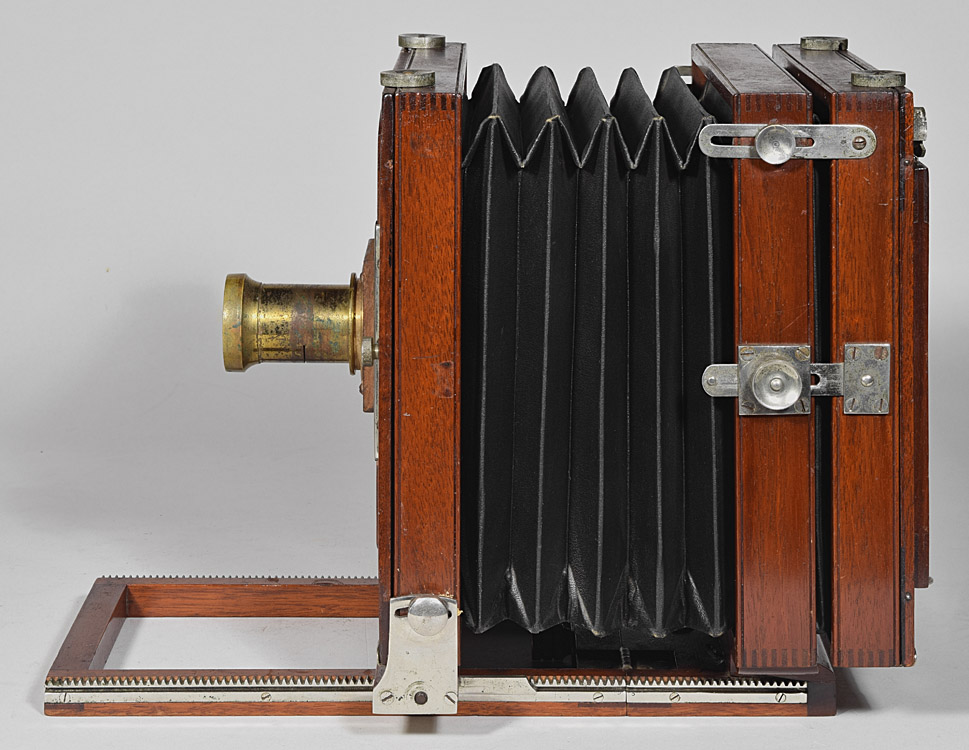
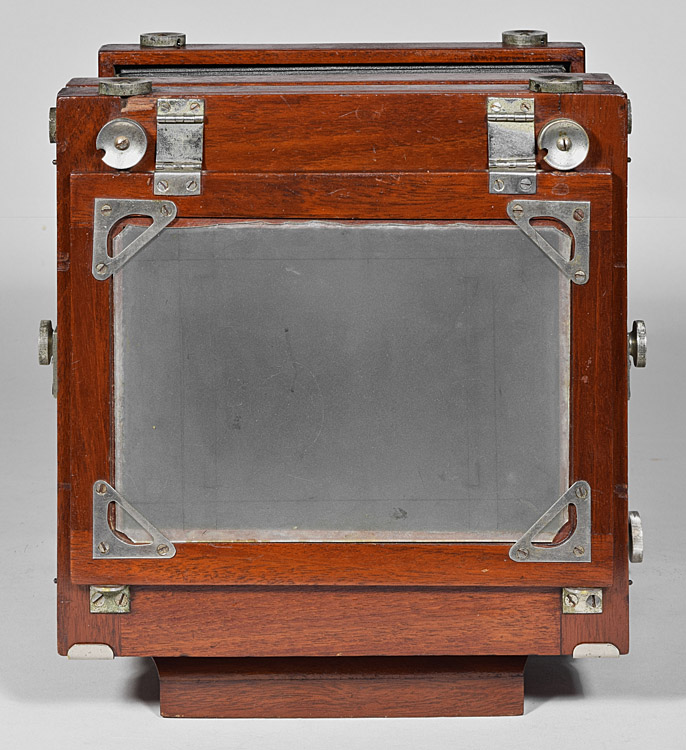
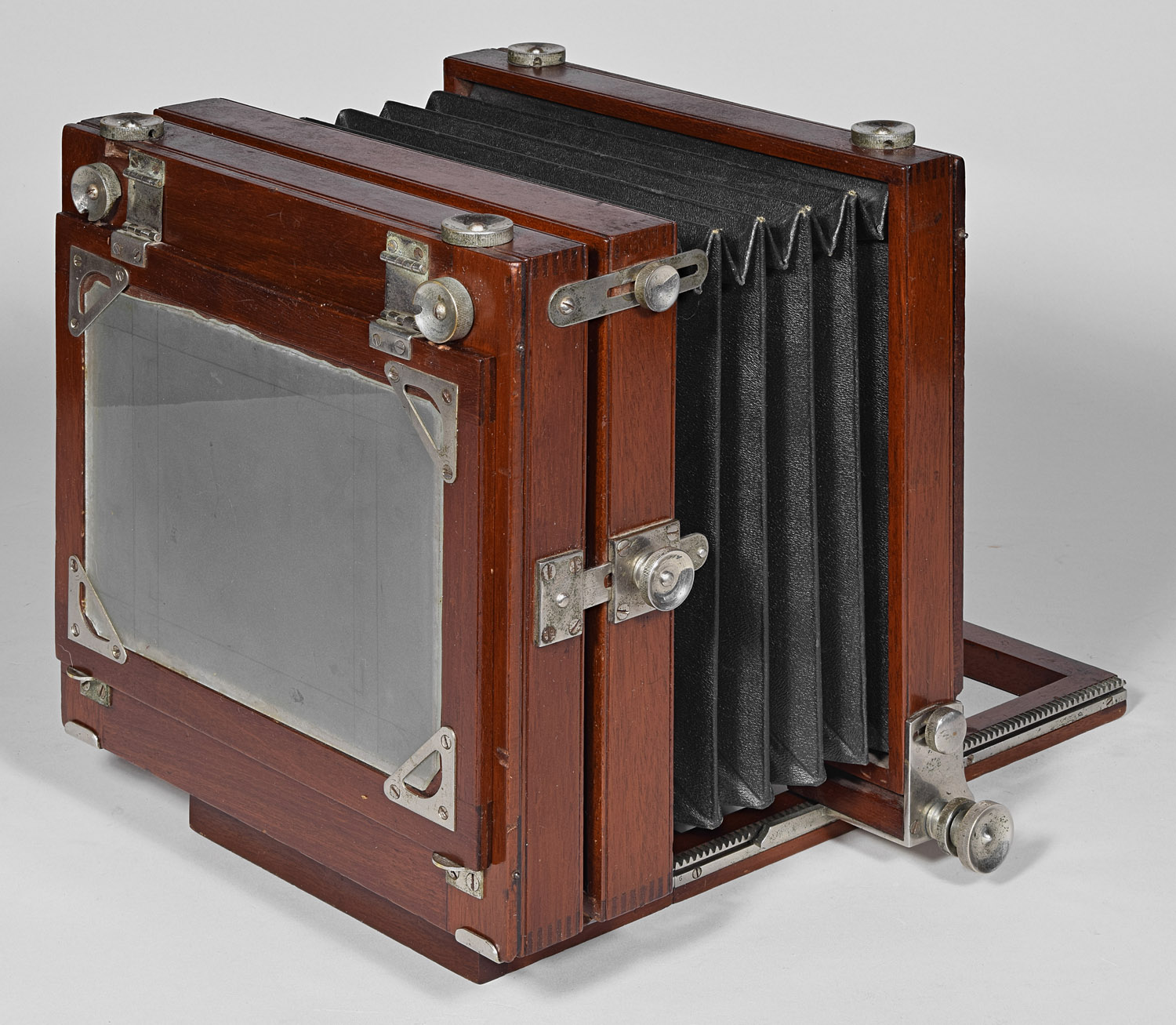

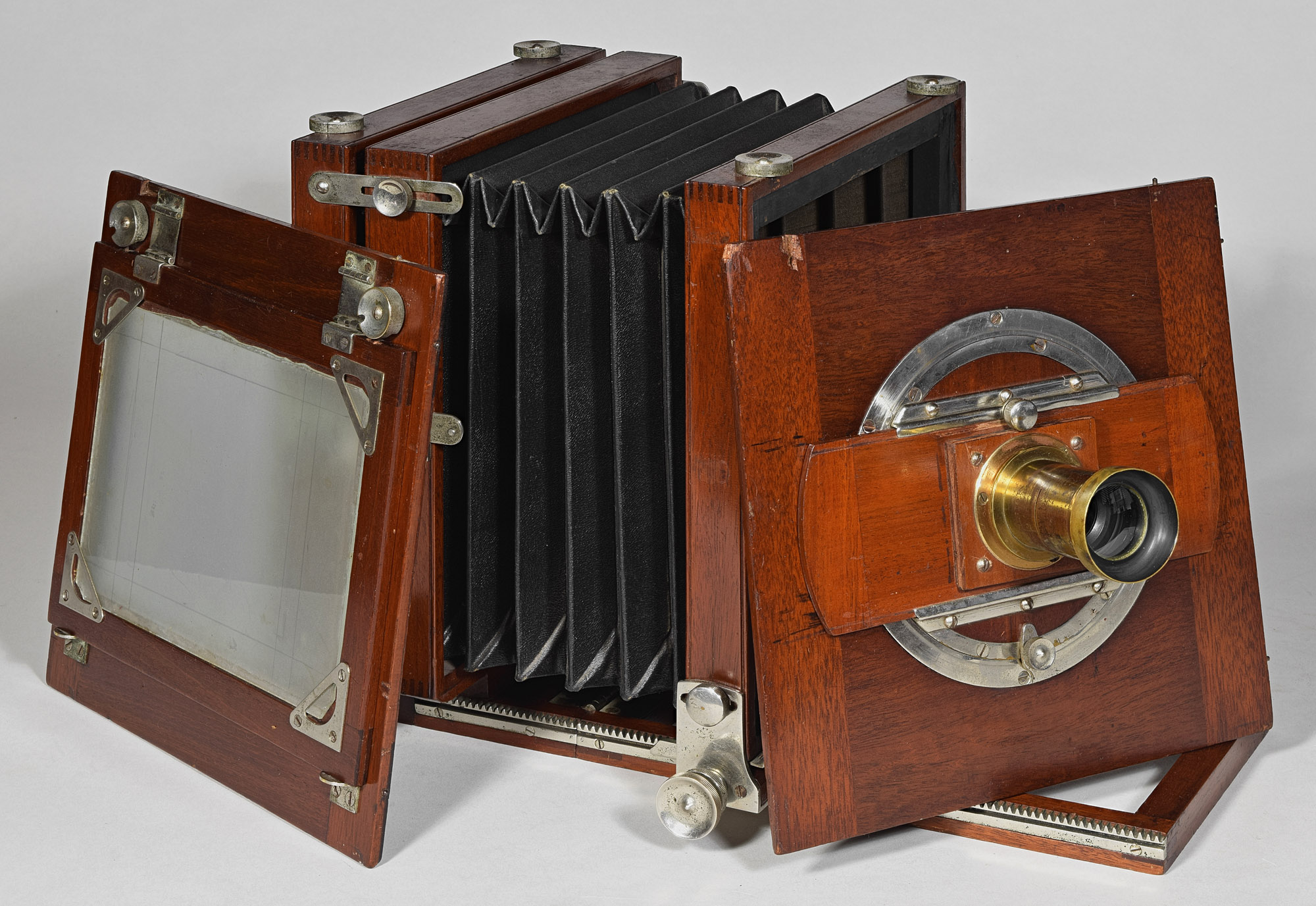
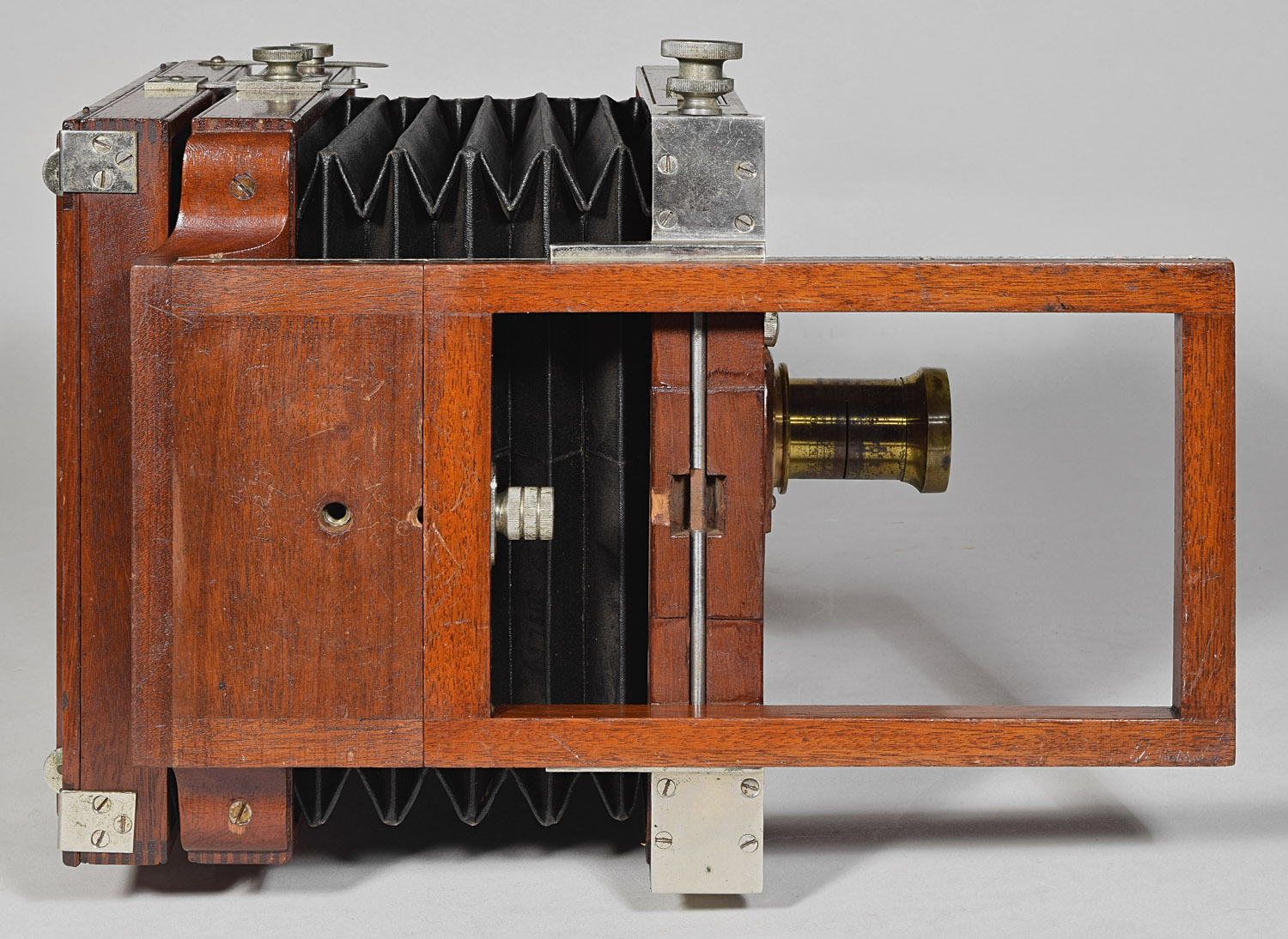
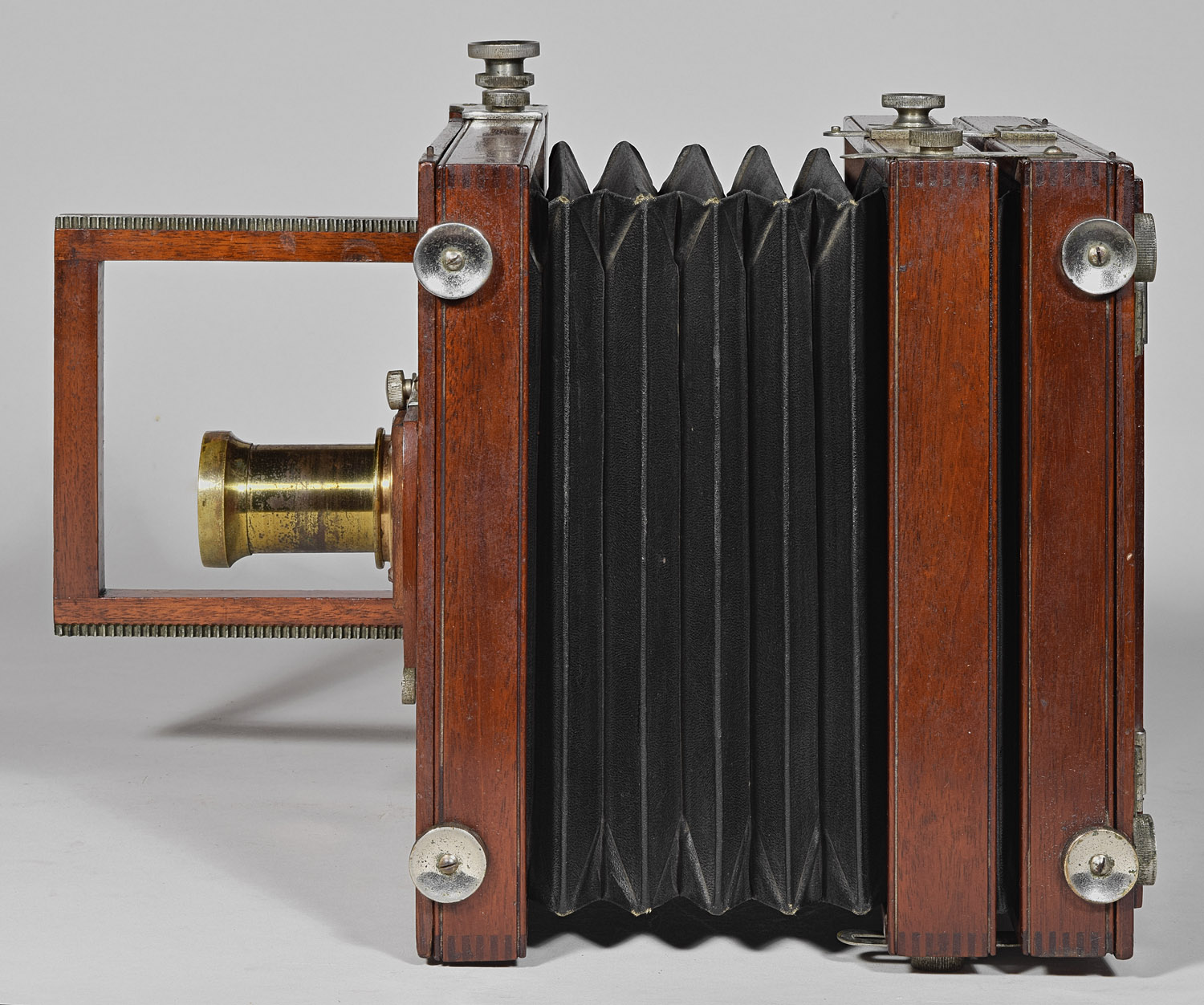
Date Introduced: - ;
Years Manufactured: c.1886 - c.1888 This camera was advertised in
the 1886 and 1888 catalogs of W.H. Walmsley & Co. Walmsley was the
sole agent for R. & J. Beck, an English company. Apparently, the
Walmsley company was the only outlet for this model, probably only for
the years 1886-1888. The camera has a number of unique or rare
features, but the designer is unknown. It may not have even been
sold in England, as internet searches have disclose no images or mention
of the Beck's Portable Camera so far. The rear standard has a limited
amount of vertical and horizontal swing provided by four slotted metal
strips - two on each side - each having a thumbscrew for adjustment.
This arrangement is very similar to that on the rear standard of the
Rochester Optical Co. Excelsior View Camera.
The back and the front of the camera both detach and are the same
dimensions, so that they may be exchanged to have either a rear-focus
camera or a front focus camera. The attachments of the front,
back, and the hinged ground glass frame are made via round, knurled,
rotatable devices, that not only hold the parts together, but tighten as
they turn, with a cam action. Rochester Optical Co. used
attachment devices of identical design on their models: the
Ideal View Camera Variation 1.0, the
Ideal View Camera Variation 1.5,
the Ideal View Camera Variation 1.7,
the New Model View Camera Variation 2.0,
the New Model View Camera Variation
2.1,the New Model
Improved View Camera Variation 1.5, and the
Peerless View Camera Variation 1.
All of these cameras are amongst the earliest variations of their
models, and were probably manufactured during the period 1886-1888, the
same period during which Beck's Portable Camera was made.. The Beck's camera is made from a
rather dark mahogany. "Mahogany" is a collective term for 30 or
more species of reddish hardwood. The Beck's camera is not stained
- the wood is just a particularly dark species of mahogany, finished
with shellac. The dark color is similar to the color of some early
Rochester Optical Co. cameras, such as the
Ideal View Camera Variation 1.0 and
the Peerless View Camera Variation
1. Is anyone surprised that these cameras are also some of the
ones that have the round, cam-type fasteners? Given the similarity between the
rear standards and cam-type fasteners of the
Rochester Optical Co. Excelsior and
Beck's Portable Camera (similar
enough that both the seller and I, the buyer thought that the above
Beck's Portable Camera was indeed a Rochester Optical Co.
Excelsior), and the the use of similar dark mahogany in the Beck's
camera and period Rochester Optical Co. cameras, one begins to suspect
that there is some connection or relationship between the Rochester
Optical Co. and R. & J. Beck in the United States (i.e., at
W.H. Walmsley & Co.). Was the Beck's Portable Camera even
manufactured in England by Beck, or manufactured by Rochester Optical
Co.? Just hold your horses, though. The diameter of
Rochester Optical Co.'s cam-type fasteners is about 20mm, whereas the
diameter of the cam-type fasteners on the above Beck's Portable Camera
is about 22mm. To me, this indicates that they were manufactured
in a different factory. After all, why would one factory
manufacture two different but similar sizes of hardware? And the
dark mahogany appears in top-of-the-line cameras not only in Rochester
Optical Co. cameras of the mid-1880's, but in American Optical Co.
cameras as well - cameras that never had any design similarities to the
Beck's camera. The darkest mahogany night have been reserved for
all top-of-the-line cameras, no matter who made them. The conclusion is that the
Beck's Portable Camera, despite its similarities to Rochester Optical
Co. cameras of the middle 1880's, was not manufactured by Rochester.
As its name proclaims, it was probably manufactured in the R. & J. Beck
factory in England. Did I mention the nifty rotating
and shifting front of the Beck's camera? I have only seen
something like it once - on the much later c.1895
Seneca Camera Mfg. Co. Seneca
View Variation 1. References:
An
Illustrated Catalogue of Photographic Cameras, Lenses and Other
Apparatus for Photography, W.H. Walmsley
& Co. (Philadelphia, PA), dated 1886, pages unknown
Back to Miscellaneous Camera Companies
Construction: front or rear focus due to
interchangeable front and back - focus
via rack and pinion (two gear tracks on top of base rails);
double swing; reversing by removable back; three-piece lens board
Materials: mahogany wood body and base;
black fabric bellows; nickeled hardware
Sizes Offered: 3¼ x 4¼; 4¼ x 5½; 5 x 8; 6½ x 8½.
Notes:
An
Illustrated Catalogue of Photographic Cameras, Lenses and Other
Apparatus for Photography, W.H. Walmsley
& Co. (Philadelphia, PA), dated April 1, 1888, pp.23-25

